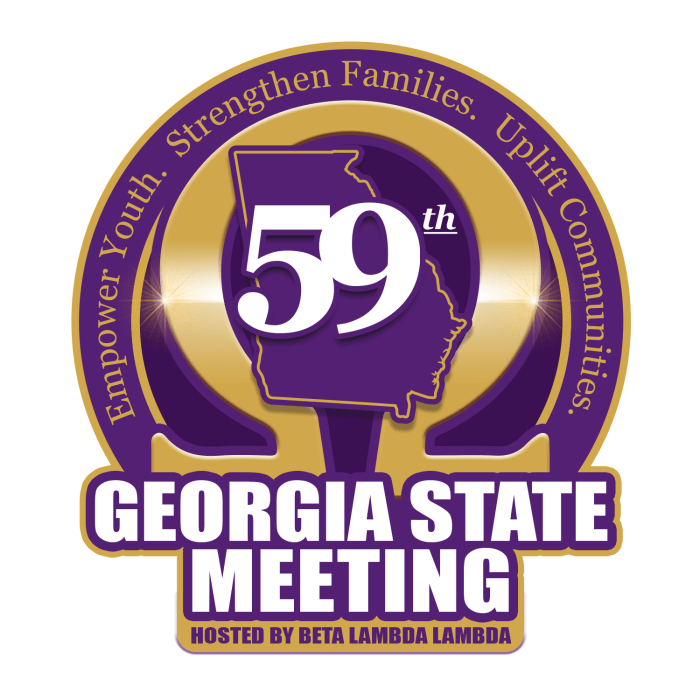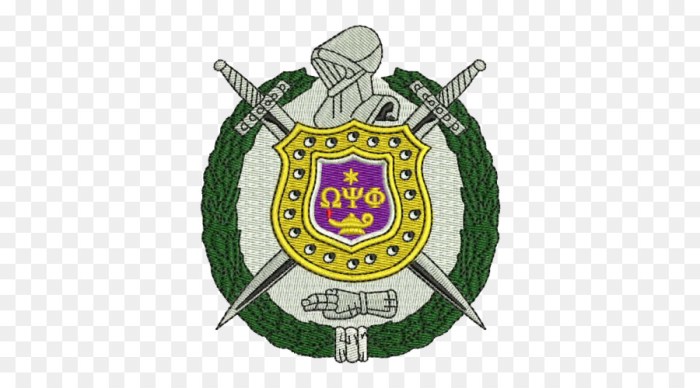Unveiling the Omega Psi Phi district map, a roadmap that charts the fraternity’s presence across the nation, connecting chapters and fostering a sense of unity. Delve into the intricacies of this organizational structure, exploring its significance and impact on the Omega Psi Phi brotherhood.
This comprehensive guide delves into the map’s purpose, unraveling the intricate web of district boundaries and locations. Discover how the distribution of chapters across these districts reflects the fraternity’s growth and historical significance.
Omega Psi Phi Fraternity: Omega Psi Phi District Map

Omega Psi Phi Fraternity, Inc. is a historically African American fraternity founded on November 17, 1911, at Howard University in Washington, D.C. The fraternity’s mission is to uplift mankind through scholarship, leadership, citizenship, and culture. Omega Psi Phi has over 750 chapters worldwide and over 750,000 members.
Mission, Values, and Goals, Omega psi phi district map
Omega Psi Phi Fraternity’s mission is to uplift mankind through scholarship, leadership, citizenship, and culture. The fraternity’s values are manhood, scholarship, perseverance, and uplift. Omega Psi Phi’s goals are to promote academic excellence, develop leaders, foster civic engagement, and preserve African American culture.
Omega Psi Phi District Map

The Omega Psi Phi district map serves as a visual representation of the fraternity’s organizational structure. It Artikels the geographical boundaries and distribution of chapters within the Omega Psi Phi Fraternity.
The map facilitates efficient coordination and communication among chapters, enabling the fraternity to operate as a cohesive unit. It provides a clear understanding of the location and proximity of chapters, which is crucial for planning events, sharing resources, and maintaining a strong sense of community.
Map Structure
The Omega Psi Phi district map is divided into regions, each encompassing multiple states or geographical areas. Within these regions, chapters are organized into districts, which are smaller geographic units. Each district typically consists of a group of neighboring chapters that collaborate closely on various initiatives and programs.
District Boundaries and Locations
The Omega Psi Phi Fraternity is divided into 14 districts, each with its own unique boundaries and location. These districts are spread across the United States and Canada, and each one represents a specific geographic region.
The following table provides a list of all Omega Psi Phi districts, their boundaries, and their respective locations:
| District | Boundaries | Location |
|---|---|---|
| Eastern District | Maine, New Hampshire, Vermont, Massachusetts, Rhode Island, Connecticut, New York, New Jersey, Pennsylvania, Delaware, Maryland, and Washington, D.C. | Eastern United States |
| Mid-Atlantic District | Virginia, North Carolina, South Carolina, Georgia, and Florida | South Atlantic United States |
| South Atlantic District | Alabama, Mississippi, Tennessee, Kentucky, and West Virginia | South Central United States |
| Southeast District | Arkansas, Louisiana, Oklahoma, and Texas | South Central United States |
| Midwestern District | Illinois, Indiana, Michigan, Ohio, and Wisconsin | Midwestern United States |
| Western District | Iowa, Minnesota, Missouri, Nebraska, North Dakota, South Dakota, and Wyoming | Midwestern United States |
| Southwestern District | Arizona, Colorado, Kansas, New Mexico, and Utah | Western United States |
| Far Western District | Alaska, California, Hawaii, Idaho, Montana, Nevada, Oregon, and Washington | Western United States |
| Canadian District | All of Canada | Canada |
The following map provides a visual representation of the district boundaries:
Chapter Distribution

Omega Psi Phi chapters are distributed across the United States, with a concentration in the Southeast and Midwest regions. The distribution of chapters is influenced by several factors, including population density, historical presence, and the location of historically Black colleges and universities (HBCUs).
Need to brush up on your astronomy knowledge? Check out this bill nye the sun worksheet for a fun and informative overview. And while you’re at it, don’t forget to check out the omega psi phi district map for a closer look at your local chapter.
Population Density
Omega Psi Phi chapters are more likely to be found in areas with higher population densities. This is because population density is a proxy for the number of potential members in an area. Chapters are also more likely to be found in areas with a larger African American population, as Omega Psi Phi is a predominantly African American fraternity.
Historical Presence
Omega Psi Phi has a long history in the United States, dating back to 1911. The fraternity was founded at Howard University in Washington, D.C., and has since expanded to over 700 chapters worldwide. The fraternity’s early chapters were established in major cities with large African American populations, such as New York City, Chicago, and Atlanta.
These early chapters served as hubs for the fraternity’s growth and expansion.
Location of HBCUs
Omega Psi Phi has a strong presence on the campuses of HBCUs. Many HBCUs have Omega Psi Phi chapters, and these chapters play an important role in the recruitment and development of new members. The location of HBCUs has therefore influenced the distribution of Omega Psi Phi chapters across the United States.
District Leadership and Governance

The Omega Psi Phi Fraternity is governed by a hierarchical structure, with district leaders playing a crucial role in the administration and management of the fraternity’s activities within their respective geographic regions.
Roles and Responsibilities of District Leaders
District leaders are responsible for overseeing the operations of all chapters within their district, ensuring compliance with the fraternity’s constitution and bylaws. They provide guidance and support to chapter officers, facilitate communication between chapters and the national organization, and represent the district at regional and national events.
Selection and Appointment of District Leaders
District leaders are appointed by the Grand Basileus, the national president of the fraternity. The selection process involves a thorough evaluation of candidates’ qualifications, experience, and commitment to the fraternity’s principles. District leaders typically serve for a term of two years and are eligible for reappointment.
District Events and Activities

Omega Psi Phi districts organize various events and activities that contribute to the fraternity’s mission of promoting scholarship, leadership, and service.
These events provide opportunities for members to connect, collaborate, and engage in meaningful experiences that foster personal growth and strengthen the bonds of brotherhood.
Major District Events
- Annual District Conventions:District conventions bring together members from all chapters within a district for networking, professional development, and updates on fraternity initiatives.
- Leadership Conferences:Leadership conferences focus on developing the skills and knowledge of chapter officers and other leaders within the district.
- Service Projects:Districts organize service projects to give back to their communities, such as volunteering at local schools, supporting food banks, and participating in community clean-ups.
- Social Events:Social events provide a platform for members to connect, relax, and celebrate the fraternity’s rich history and culture.
- Fundraisers:Districts may organize fundraisers to support scholarships, community programs, and other initiatives that align with the fraternity’s mission.
District Collaboration and Partnerships

Omega Psi Phi districts foster strong collaborations among themselves and with external organizations to enhance their impact on the fraternity and the community.
These partnerships enable districts to pool resources, share best practices, and amplify their reach. They also create opportunities for joint initiatives, mentorship programs, and community outreach initiatives.
External Partnerships
Omega Psi Phi districts have established partnerships with various organizations, including:
- Community service organizations (e.g., United Way, Red Cross)
- Educational institutions (e.g., universities, high schools)
- Government agencies (e.g., local municipalities, state legislatures)
- Non-profit organizations (e.g., Boys & Girls Clubs, Habitat for Humanity)
These partnerships allow districts to leverage the expertise and resources of these organizations to support their programs and initiatives.
Inter-District Collaboration
Omega Psi Phi districts also collaborate extensively with each other, sharing ideas, resources, and support.
For example, districts may co-host events, such as leadership conferences or community service projects, to reach a wider audience and maximize their impact.
Additionally, districts may establish mentorship programs where experienced leaders provide guidance and support to newer districts.
Impact of Partnerships
The collaborations and partnerships fostered by Omega Psi Phi districts have a significant impact on the fraternity and the community:
- Increased reach and visibility of Omega Psi Phi
- Expanded access to resources and support
- Enhanced effectiveness of programs and initiatives
- Positive impact on the community through joint projects
By leveraging the power of collaboration, Omega Psi Phi districts are able to amplify their impact and make a meaningful difference in the lives of their members and the communities they serve.
Questions Often Asked
What is the purpose of the Omega Psi Phi district map?
The district map serves as an organizational tool, outlining the boundaries and locations of Omega Psi Phi districts, facilitating communication and collaboration among chapters.
How are district leaders selected?
District leaders are appointed through a process that considers their leadership qualities, commitment to the fraternity, and ability to represent their district effectively.
What types of events and activities are organized by Omega Psi Phi districts?
Districts host a range of events, including chapter meetings, community service projects, social gatherings, and educational programs, fostering a sense of camaraderie and engagement.